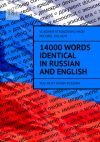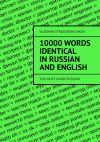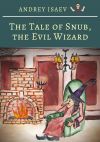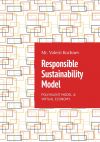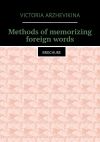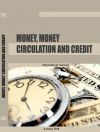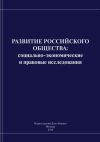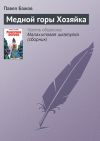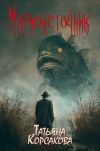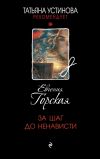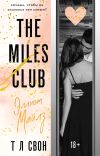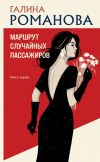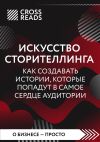Текст книги "Английский для экономистов (учебник английского языка)"

Автор книги: Денис Шевчук
Жанр: Иностранные языки, Наука и Образование
сообщить о неприемлемом содержимом
Текущая страница: 17 (всего у книги 19 страниц) [доступный отрывок для чтения: 6 страниц]
SPEAK AND WRITE
1. Differentiate between financial and managerial accounting.
2. Describe employment opportunities in accounting.
3. Explain the relationship, if any, between accounting and auditing.
4. An anonymous adage reads, “An accountant is a man who is hired to explain that you didn’t make the money you did”. Your comments?
5. Explain, in your own words, the meaning of the fundamental accounting equation.
6. Define, in your own words, the notions of accounting, auditing and bookkeeping.
7. Drawing on the information provided in this Unit and referring to other professional sources, list the users of accounting information and define their interests in the business.
8. Summarize the information of the Unit to be ready to speak on Accounting and Auditing. The first step to be done is to write the plan of your future report.
9. Choose any question (topic, problem) relating to Accounting or Auditing and make a 10-15 minute report in class. Refer to different additional sources to make your report informative, instructive, and interesting.
APPENDIX
How do I know what I think
until I see what I say?
Forster
Have you ever found yourself in a situation when you are sitting with the pen in your hand trying to start writing? You begin your paper by writing the first sentence, with the blind hope that it will somehow generate a second, which will in turn generate a third… No ideas, no clever thoughts, words have disappeared…You hate the lesson, you hate the teacher, you are going to hate the whole world.
I’m not going to lecture on rhetorics. I’d like you to read this “ gathering together” of some practical suggestions on writing. I hope they will help you.
I
The object of any piece of writing is to make your reader understand exactly what you have to say – and understand it quickly and as efficiently as possible. To make your reader do this you must lay out your article, essay, report, story –whatever it may be – like a carefully surveyed road. Think of a piece of writing as a trip from a definite starting point to a definite destination. Point out to your reader, then, at the beginning, the destination in which you are going and the destination you have in view. Remind him of the progress you are making by setting up easily read sign-points along the road. At the end tell them clearly that you have arrived – and see that they understand it.
Essay is one of the most interesting and fascinating pieces of writing. The most commonly used definition of an essay if the following: An essay is the written expression of its author’s opinion. At its best an essay blends facts with imagination, knowledge with feeling, never giving itself over wholly to one or the other. Essays will differ in quality and in kind, in length, in style, in subject. But in the final analysis essay expresses a personal opinion. An essay does not merely record facts or recount experience; it requires the author’s opinion of those facts and experiences.
Too often students let themselves become machines, ingesting the information their teachers offer them and then feeding it back. But a student is no machine when he writes an essay; he is a human being – judging, evaluating, interpreting, expressing not only what he knows but what he is. Thus every attempted essay is a kind of voyage toward self-discovery.
The methods an essayist may use to express his opinion vary enormously: he may put his opinion forward seriously or humourously, scientifically or imaginatively, formally or informally. He may state it explicitely or implicitely. But opinion is always present.
What is an opinion? Most of us use the word ‘opinion’ loosely. We tend to claim as opinion all sorts of prejudices, sentiments, platitudes, and vague convictions. But a genuine opinion, strong enough to support the structure of an essay, must meet certain specifications, all of them clearly laid in this definition: opinion is a belief not based on absolute certainty or positive knowledge but on what seems true, valid, or probable to one’s own mind; what one thinks, judgement.
Which judgement is correct? Which represents the final truth? Nobody knows, for truth is not something that can be weighed, measured, labeled, and conveniently stored for future reference. We’ll accept as true opinion the opinion that is supported by the most evidence, that is most logical, the most clearly stated, the most persuasive. You cannot expect your opinion to be subject to scientific proof. Your purpose is to persuade, not to prove, and the strength of your essay will depend upon how well you persuade a reader to agree with your particular view.
You will quickly discover that certain opinions you reach seem more interesting than others. Certainly your own enthusiasm for your subject has something to do with it. All of us write best about the subjects we like best. But more effective than anything else in arousing interest in an opinion is opposition. If a substantial number of people disagree with your views on a subject, you may be sure that your views will excite interest.
II
The basic structure of the essay is extremely simple. It has three parts: an introduction, a body, and a conclusion.
Do you remember the King’s directions to the White Rabbit in Alicein Wonderland: “Begin at the beginning, , and go on until you come to the end: then stop.” Thus, beginning is an introduction, stop is a conclusion, and what comes in between is a middle or body.
The function of the introductory paragraph is simply to introduce the subject and come to the point. Whether your middle section is short or long, it is here that the real power of your essay resides. For the middle section is your argument. The first consideration, the most crucial for the beginner, is logical development. Remember that your final argument in the middle section should be your strongest. To develop the middle section, you need only three rules to guide you:
1. Make the necessary concessions to the opposition as soon as possible.
2. Devote at least one full paragraph to every major pro argument in your full thesis statement.
3. Save your best argument for the last.
Your final paragraph – the conclusion – may echo the first one.
The introduction, i.e. the first paragraph, is a short paragraph whose purpose is to give the reader a general idea of the subject of the composition. It should attract the reader's attention so that he/she wants to continue reading.
The main body usually consists of two or more paragraphs and its purpose is to develop points related to the subject of the composition. The number of paragraphs and the way you divide them depends on the specific topics of the composition. Each paragraph should deal with points related to the same topic. Whenever you discuss a new topic, you should begin a new paragraph. For example, in a for and against essay the main body should have two paragraphs: one discussing the points for, and another discussing the points against.
Main body paragraphs should begin with topic sentences. A topic sentence includes or summarizes the main topic of the paragraph and gives the reader an idea of what the paragraph will be about. The topic sentence should be followed by supporting sentences which provide examples, details, reasons, justifications and/or evidence to support the topic sentence.
The conclusion is a short final paragraph in which you can summarize the main idea of the subject, restate your opinion in different words, make general comments, express your feelings, etc.
III
Some words about the Paragraph, the Sentence, and the Word.
The paragraph is merely a group of more or less closely related sentences which deal with a subdivision of the thought. The paragraph was developed in order to make reading easier for. That’s why don’t make them so long that they are hard to follow, or so short that they are choppy. Take care that the subject of a paragraph is made clear in the paragraph itself and merely implied from the preceding paragraph or referred to by a pronoun. Unless a paragraph is more or less self-contained it does not fulfill its mission in life. Always remember that the beginning and the end of a paragraph are the most emphatic positions in a piece of writing.
The sentence was not invented by grammarians but by ordinary people as the best way of expressing thoughts. The form of the sentence is the way in which mankind naturally thinks, the order in which thoughts most easily take shape in our minds. That is why a man who thinks clearly will always find it possible to write a well constructed sentence, and a man who is vague or lazy in his thinking will almost always write a badly constructed sentence.
Good writing must be clear, accurate, and vivid. Whether you are clear or not depends to a great degree upon the clearness of your sentence structure, but your accuracy and vividness depend upon the words you choose. Ill-chosen words show that you have been lazy to think clearly what you are trying to say or that you don’t quite know what words mean. There is rarely more than one word to express an idea exactly, See that you get that one right word. Nouns and verbs are the bones and sinews of speech. Nouns build up the bony structure of the sentence, verbs produce motion. The more concrete nouns and active verbs you see, the more forcefull your writing. Adjectives and adverbs are often necessary to complete your meaning and make it exact, but they lessen the force of the sentence. When you divide your reader’s attention between a noun and its qualifying adjectives, or between a verb and its adverbs, you decrease the force of the impression which that noun and the verb normally make. The fewer the words used, the more concentrated the attention; and the greater the concentration, the greater the power. For this reason two or three adjectives pyramided upon each other’s shoulders decrease the force of the impression instead of adding to it. At first sight this may not seem reasonable, but it is true. “The adjective”, said Voltair, “ is the enemy of the noun”.
A note: Have you ever heard of OPSHACOM? You won’t find this word in your dictionaries. It has no real meaning. OPSHACOM is a mnemonic. By remembering the spelling of this word, you can remember the order of the adjectives before noun.

IV
There are different approaches to writing. Look at the following steps. Try to follow them.
STEP I. Analyzing the question.
Make sure you understand exactly what you have to do: Topic–Focus–Comment.
STEP 2. Brainstorming.
“Brainstorm” as many points as you can think of to do with the focus of the topic. Let your mind wander freely. Write down all the ideas. Don’t try to organize them in any way yet.
STEP 3. Organizing your ideas.
Put together ideas which are similar in some way. Get rid of irrelevant ideas. Develop a plan for writing.
STEP 4. Writing a first draft.
Concentrate on linking your ideas well. Do not worry too much about mistakes of grammar, spelling and punctuation.
STEP 5. Rewriting and editing
Check for language errors. Check for whether what you have said coincides with what you wanted to say in a logical and persuasive way.
V
To plan your composition you should bear in mind the following:
the imaginary situation you will write about (e.g. You are a reporter.. to write about a fire which broke out last night…) This can also suggest who you are (e.g. a reporter), what has happened (e.g. fire broke out), etc.
the imaginary reader who is going to read your piece of writing (e.g. the manager of the company you work for has asked you to write…). This will help you decide on thewriting style i.e. the appropriate style of language – formal/informal, etc you should use.
the type of writing (e.g. a letter, an article describing an event you attended, etc)
the specific topics you should include in your answer (e.g.describe the placeand comment on itsgood and bad points)
Study the example below.
You (1) work for a travel agency. Your editor (2) has asked you to write an article (3) discussing the pros and cons of air travel(4), including factors such as cost and convenience(4) .
1 – situation 3 – type of writing
2 – reader 4 – specific topics
VI
There are a variety of writing techniques you can use to make your essay more interesting to the reader.
To begin or end your essay you can:
address the reader directly i.e. write as if you were speaking to him/her. e.g. You can imagine what life would be like without water.
use direct speech to give somebody's exact words, a quotation from a famous person or someone who has influenced your life, a proverb or a saying (i.e. a well-known phrase). In all cases it is necessary to use quotation marks. e.g. After all, "An apple a day keeps the doctor away.'
use a rhetorical question i.e. a question that does not expect a reply. e.g. What would modem society be like without computers?
start a narrative by setting the scene i.e. by using the senses to describe the weather, atmosphere, surroundings and also to create mystery and suspense. e.g. ft was a cold winter's night. The wind was blowing hard as Jack was walking down the dark empty street.
You can also use a variety of adjectives, adverbs and verbs to make your composition more attractive to the reader. e.g. 'Hold on!' Helenscreamed to Bob as shedesperately tried to help him get out of thefreezing water.
VII
The writing style you should use depends on the type of an essay you are writing, the situation and the intended reader. Therefore, you should not use the same style of writing for every composition. The two main types of writing style are formal and informal.
Formal style is characterized by:
• formal expressions, advanced vocabulary, longer sentences; e.g.Taking everythinginto consideration, It can be said that the facilities offered areof poor quality.
• formal linking words/phrases (i.e. however, nevertheless, in addition, consequently, etc.)
e.g. Mobile phones are extremely useful for people who travel frequently. However, they can be dangerous.
• no use of short forms (i.e. I'm, there's…);e.g. /would be grateful if… (instead of: I'd be grateful if…)
• impersonal tone, i.e. use of the passive, no description of feelings e.g. Late this evening, 20-year-old Tim McComackwas pulled to safely afterbeing trapped under debris for more than ten hours.
• factual presentation of the information; e.g. The Town Hall,constructed in the late1800s, was seriously damaged by fire In 1909.
Informal style is characterized by:
• everyday/colloquial expressions, vocabulary and idioms. e.g. I thought I'd drop you aline…
• frequent use of short forms; e.g. /won’t be able to come to your party asI'll be away on a business trip.
• informal phrasal verbs; e.g. Lucytakes after her father. She's …
• simple linking words/phrases (i.e. but, so, because, and, etc) e.g. It rains a lot here,so you'd better take an umbrella with you.
• shorter sentences
e.g. Thanks a lot for the invitation. I'd love to come.
• personal tone i.e. use of first person (I/We) e.g. I've got great news. I've found a new job.
• descriptive tone i.e. use of adjectives/adverbs etc for vivid description e.g.it was abitterly cold winter morning.
Semi-formal style is characterized by:
n less formal language
n less frequent use of short forms, formal linking words/phrases or the passive
n respectful, polite tone.
Compare:
Formal: I would be grateful if you could reply at your earliest convenience.
Semi-formal: I look forward to receiving your reply as soon as possible.
Informal: I can’t wait to hear from you.
VIII
Essay is an argument. ‘For and against’ essays are one type of discursive writing in which you discuss the advantages and disadvantages of a specific topic. A «For and against» essay should consist of:
a) anintroduction in which you present the topic, making a general remark about it .without giving your opinion;
b) amain body in which you present the points for and the points against, in separate paragraphs, supporting your arguments with justifications/examples;
c) aconclusion which includes your opinion (e.g. In my opinion/view, I believe/ think, etc) or a balanced summary of the topic.
You must not include opinion words (I believe, I think, etc) in the introduction or in the main body. Opinion words can only be used in the final paragraph, where you may state your opinion on the topic.
«For and against» essays are normally written in aformal style; therefore you should avoid using strong language (I know, I am sure, etc), short sentences, colloquial expressions or idioms.
Essays providing solutions to problems are pieces of writing in which you discuss a problem and its causes as well as the expected results or consequences of your suggestions. An essay providing solutions to problems should consist of:
a) anintroduction in which you state the problem and/or what has caused it;
b) amain body which consists of two or more paragraphs presenting suggestions and their results/consequences. You should start a new paragraph for each suggestion and its results/consequences; and
c) aconclusion in which you summarize your opinion.
Essays providing solutions to problems are normally written in a formal or semi-formal style, depending on who is going to read them and where they are published. They are usually found in newspapers and magazines.
First-person narratives are written in the first-person (I/we) about a series of events, real or imaginary, which happened to us. A first-person narrative should consist of:
a) anintroduction in which you set the scene (who was involved, time, place, etc) in an interesting way to make the reader want to continue reading;
b) a main body, consisting of two or more paragraphs, where you develop your story, presenting the events in the order they happened; and
c) a conclusion which includes what happened at the end of the story, as well as people's feelings, final comments or reactions. A surprising ending makes a long-lasting impression on the reader.
You should normally use past tenses in such pieces of writing, as well as a variety of adjectives or adverbs to make your story more attractive to the reader. Narratives can be found in articles, letters, novels, etc. To attract the reader's attention, give interesting and catchy titles to your stories, especially if they are for a magazine, newspaper, etc.
Reviews are short descriptions of books, films, plays, TV programmes, etc. They are written to inform readers and viewers, and to give them your opinion/recommendation about whether (or not) they should read a book or see a film/play/etc.
A review should consist of:
a) anintroduction in which you summarize all the background information of the book/film/etc, (i.e. title, name of author/director, type, setting, etc);
b) a main body consisting of two paragraphs: one about the main points of the plot, presented in chronological order, and another including general comments on the plot, the main characters, the acting, the directing, etc.
Note: You should not reveal the end of the story to the reader.
c) a conclusion in which you recommend or do not recommend the book/film/play/etc, giving reasons to support your recommendation.
Reviews are normally found in newspapers, magazines or as parts of a letter. The style you use depends on the publication and the intended reader and can be formal or semi-formal.
You normally usepresent tenses and a variety of adjectives to describe the plot and make your comments more clear and to the point.
Reports are normally written for someone in authority (e.g. your employer, the local council, the head of a committee, etc) and contain factual information.
Assessment reports present and evaluate the positive and negative qualities of a person (i.e. an employee) or a building/place (i.e. a hotel, a restaurant, a shop, a cinema complex, etc) in order to make a judgement or recommendation about them. Proposal reports present suggestions, plans or decisions about future actions. Reports should consist of:
a) anintroduction in which you state the purpose and content of the report;
b) amain body in which you present each topic in detail under suitable subheadings (these headings introduce the topic of the paragraphs, so you do not need to start each paragraph with a topic sentence);
c) aconclusion which summarizes the information from the main body and states your general assessment and/or recommendation.
Reports are written in a formal, impersonal style. You should use factual language, passive voice and full verb forms. You should also write fairly short sentences to help your reader pick out the information easily. Present tenses are normally used forassessment reports. Past tenses can be used for reports related to past events. Modals, conditionals or would are normally used forproposal reports.
You should always begin your report by stating who the report is addressed to and what their position is, the writer's name and position, what the report is about and the date.
Правообладателям!
Данное произведение размещено по согласованию с ООО "ЛитРес" (20% исходного текста). Если размещение книги нарушает чьи-либо права, то сообщите об этом.Читателям!
Оплатили, но не знаете что делать дальше?